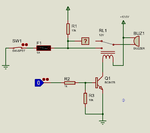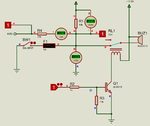Shachar85
Member level 2
Hi
I'm working on a little project. A part of it is to connect to the car's horn.
I want to use a fuse in the way.
The problem is that in a usual use of the system I have no way to know if the fuse is burnt and it is critical.
I attached a diagram. Sorry if it is not very professional :roll:
I would like to know if the point X is connected to the ground (it will be, of course, if the fuse is ok).
I'm using arduino in the project.
How can I read point X?
thanks
I'm working on a little project. A part of it is to connect to the car's horn.
I want to use a fuse in the way.
The problem is that in a usual use of the system I have no way to know if the fuse is burnt and it is critical.
I attached a diagram. Sorry if it is not very professional :roll:
I would like to know if the point X is connected to the ground (it will be, of course, if the fuse is ok).
I'm using arduino in the project.
How can I read point X?
thanks


